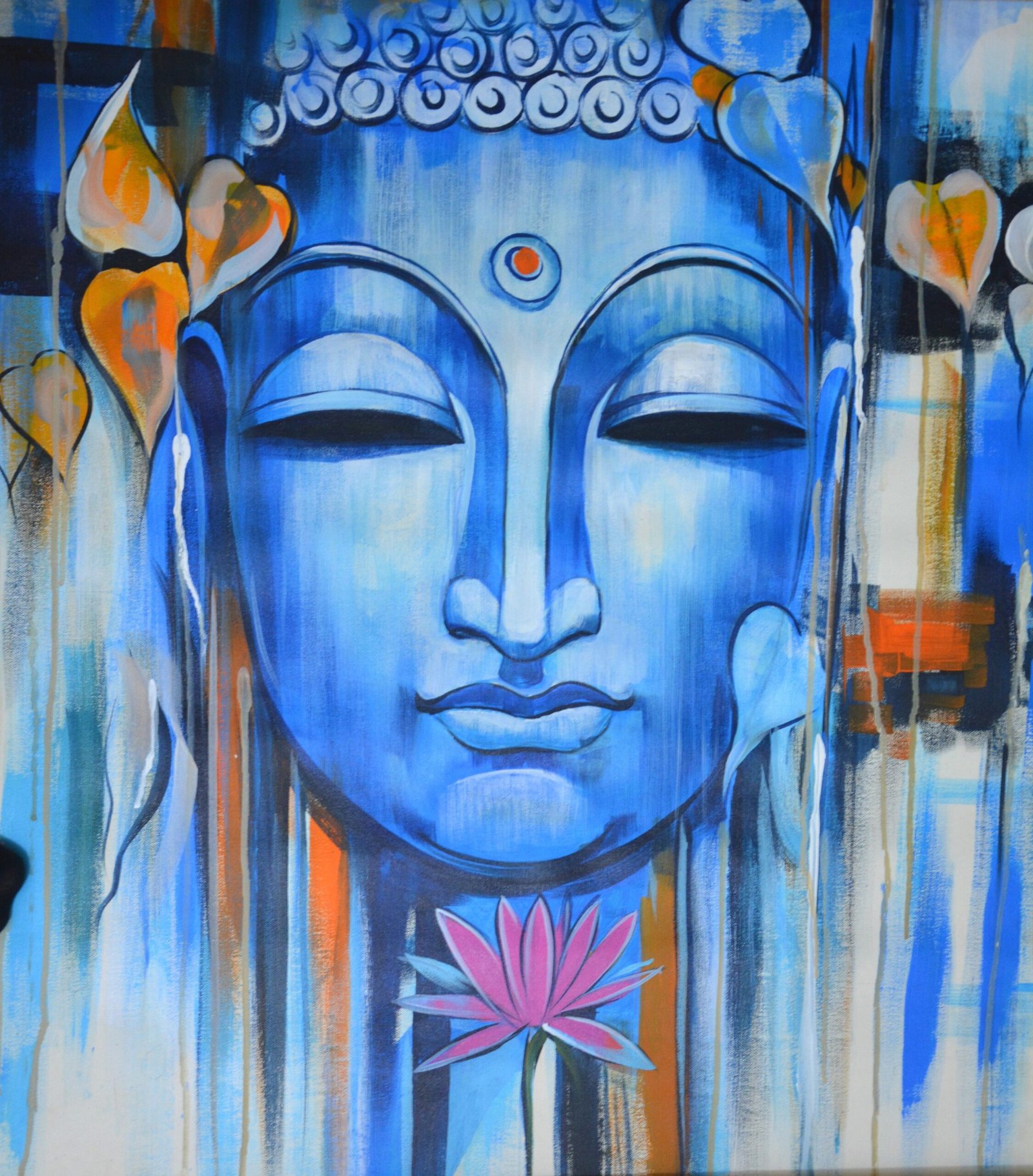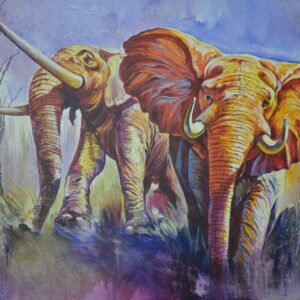| Painting Visual elements:
The painting depicts a blue Buddha seated on a lotus flower. The exact size of the painting is 2 x 3 feet, it is a medium-sized work.
The dominant color in the painting is blue. The Buddha’s robe is rich, cobalt blue, and the background is a lighter shade of blue, perhaps cerulean. The lotus flower is white or cream colored, and there are small areas of yellow, orange, and red around the lotus flower, possibly depicting the stamen and pistil or the setting behind the Buddha.
The shapes in the painting are mostly curved. The Buddha’s body is curved, and the lotus flower has rounded petals. The background is a simple, rectangular shape, but the top edge is softened to create a more organic feel.
The main object in the painting is the Buddha. He is seated in a lotus position, with his eyes closed and his hands resting on his lap in a gesture known as dhyana mudra, which symbolizes meditation. The lotus flower is a symbol of purity and enlightenment in Buddhism.
The composition of the painting is symmetrical. The Buddha is placed in the center of the canvas, and the lotus flower is directly below him. This symmetrical composition, along with the use of calming blues and the serene posture of the Buddha, creates a sense of balance and tranquility in the viewer.
Emotions and symbolism:
The use of blue is a common color in Buddhist art, and it is associated with feelings of peace, tranquility, and wisdom. The blue color of the Buddha and the background may evoke these emotions in the viewer.
The lotus flower, besides its association with purity, also symbolizes enlightenment because of its ability to rise above muddy water and bloom into a beautiful flower. The fact that the Buddha is seated on the lotus flower suggests that he has achieved enlightenment.
The dhyana mudra hand gesture also reinforces the symbolism of meditation and enlightenment. |






Reviews
There are no reviews yet.